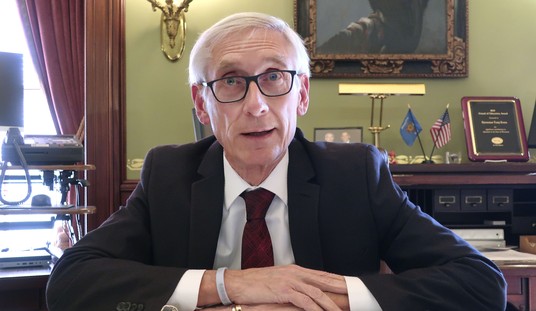Rhode Island Gov. Gina Raimondo (D) followed Gov. Andrew Cuomo’s (D-N.Y.) lead this month by calling for free college tuition at the Community College of Rhode Island, Rhode Island College and the University of Rhode Island.
“The reality is most jobs being created now in Rhode Island will require some degree or certificate beyond a high school diploma,” Raimondo said. “We are going to stand up and make the college dream a reality for every Rhode Islander who wants it.”
But Raimondo is not doing the full Cuomo with what she’s dubbed “Rhode Island’s Promise.”
Raimondo is only calling for two years of free college, whereas Cuomo wants a four-year free ride.
Rhode Island’s Promise would cover the entire cost of tuition and mandatory fees for full-time students who qualify for in-state tuition earning an associate’s degree at CCRI. At RIC and URI, the scholarship would cover tuition and fees for a student’s junior and senior years.
Cuomo, in his State of the State address, proposed four years of free tuition for New Yorkers making up to $125,000 per year at all of the City University of New York and State University of New York two- and four-year colleges.
Like Raimondo, Cuomo made the point that the future’s pretty dismal for anyone without a college degree these days. But he also said the cost of higher education dims the prospects of many graduates.
“It is incredibly expensive and the debt is so high it’s like starting a race with an anchor tied to your leg,” Cuomo said when he unveiled his Excelsior Scholarship program Jan. 3. “That is not fair. That is not right.”
Vermont Sen. Bernie Sanders (I) was on stage with Cuomo when the scholarship program was announced. Sanders, who campaigned for president on the platform of free college, called the proposal “revolutionary.”
But others, as Education secretary nominee Betsy DeVos told Sanders during her confirmation hearing, are telling Cuomo and Raimondo that somebody’s going to have to pay for this.
“Senator, I think that’s a really interesting idea,” DeVos put it when she was asked by Sanders about the plan he offered during the Democratic presidential primary campaign. “And it’s really great to consider and think about, but I think we also have to consider the fact that there’s nothing in life that’s truly free; somebody’s going to pay for it.”
The New York Observer editorial board accused Gov. Cuomo’s team of creating a proposal with arithmetic so “fuzzy” that they might have also been involved in “a medical marijuana expansion program” when they ran the numbers.
The Observer believes what Cuomo is billing as a $163 million-a-year program will actually cost as much as $4.6 billion a year.
“We were shocked at the cavalier fuzziness of the governor’s math. Did he not expect anyone to check the underlying assumptions?” the Observer editorialized.
The Providence Journal editorialized that Raimondo’s Rhode Island Promise would “take money out of the taxpayers’ pockets to fund expanded government” and wondered if it was really wise to flood colleges with even more high school graduates who are ill-prepared for higher education.
“A huge percentage of students at the Community College of Rhode Island need remedial courses before they can even take college courses, and the education reforms the governor has advanced are regrettably weak and timid, designed to placate powerful political interests rather than shake up the system,” wrote the Journal.
House Minority Leader Patricia Morgan (R) told the Coventry Courier she doesn’t think Rhode Island could afford to pay for even two years of college for everyone who might want to enroll.
“We have a structural deficit and to be adding more spending now and putting more rock on the backs of our businesses is not going to repair it,” Morgan said. “Why not look to making sure that our elementary and secondary schools are doing a great job in educating our students?”
Now there’s an idea. Instead of paying for college for students who might not be ready for higher-education classes, put money into education downstream to better prepare people for college.
Coincidentally, Harvard economist David Deming and his colleague from UC Berkeley, Christopher Walters, released a study in January that shows Rep. Morgan is probably right.
They concluded that lowering the cost of a college education does not result in more people walking into their world with diplomas. In fact, if the cost of college education is lowered by taking money out of classroom instruction, Deming and Walters concluded the impact is actually negative.
Even if Deming and Walters are wrong, Matthew Chingos, a senior fellow at the Urban Institute, said there is very little in Gov. Cuomo’s proposal that will help the neediest high school graduates in New York.
Chingos wrote in the Washington Post that most of the benefits would go to upper-middle-income families because low-income kids already have most of their education paid for through existing state and city programs like the $1 billion Tuition Assistance Program.
And there’s another choir to be heard from in this debate: the voices of the people who run private colleges and universities. They say Cuomo should be looking at helping all students, whether they go to public or private schools.
Kevin Cavanagh, the president of strategic planning at the College of New Rochelle, told the New York Post Cuomo’s Excelsior Scholarship program would hurt many of the more than 100 private schools that compete with public colleges for students.
“When it comes to financial aid, the state policy has always been about treating all students the same. It’s been a great public-private partnership,” Mary Beth Labate, president of the Commission on Independent Colleges and Universities, told the Post. “This proposal tears that away.”









Join the conversation as a VIP Member